Many options of fuel cell applications are known today, more and more opportunities are expected to be discovered in the future, as the technology becomes widely available, the prices decrease due the gradually newer and more compatible technical parameters.
The fast improvement was inspired by the strong need for utilization in transportation, so mostly the PEM type fuel cell used in vehicles was the most involved, but this interest has extended to other types as well and speeded up the development of cells of other fields.
Fuel cells can be categorized based on the type of the electrolyte, since they mostly determine the cells’ attributes. Therefore, utilization can also be connected to one or two types mostly. The 6 main cell types can be utilized in the following areas:
Installed applications
Installed applications just like their names suggest mean fix, installed facilities. However, every application is listed in this category non-portable and non-transportation related items, the aim of which is not an exact consumer (e.g.: electric engine) that makes part of the facilities, but general production of electricity for any external user. In many applications, besides the production of electricity they make use of the temperature loss of the cell as well, thus making combined power (co-generation) which they also call joint energy production as well.
Installed fuel cell systems can be divided into the frequency and continuity of their operation, which is usually in connection with the life span of the cell:
- continuously operating, mostly energy supply applications – this includes the purely energy production or connected energy production (CHP) or recently triple energy production (CHHP, Combined Heat, Hídrogen & Power) purpose technologies with a lifespan of 20-30,000 hours stack
- temporary operation (e.g.: uninterrupted (UPS), or emergency power supply stationary facilities with the lifespan of 3-5,000 hours stack
Regarding performance, there are a lot of types of installed fuel cells available. Based on the non-official categorization the following major categories exist, of course there are inter performances, and modular structures that can be installed based on specific needs (https://www.hfc-hungary.org/energiatermelo-telepitett-alkalmazasok/):
- Domestic fuel cell systems: ~0.3 – 5 kWu,
- Commercial/industrial scale fuel cell systems: ~100 – 500 kWu,
- Utility scale fuel cell systems: from ~1 MWe to more than ten MWe performance. The biggest currently functioning fuel cell system has the capacity of 59 MWe. It is located in South Korea and it consists of 2.8 MW unit performance based MCFC fuel cell stack.
Besides installed facilities, similar purpose (listed under stationary applications), but portable solutions (container, trailer etc.) as well. These usually cover smaller performance (5-100 kW) needs. Toyota’s idea is an interesting concept in this matter, when it comes to energy production use of their vehicles: they sold Mirai in some countries with installed sockets, through which you may sell electricity which is produced by the vehicle’s fuel cell. It is able to supple a household with electricity in case of need. Another version of this concept is the fuel cell buses that form a power station which may be used in events of catastrophe or places with weak infrastructure to provide temporary electricity for the area.
Fuel cells spare systems
At the systems where availability – for example data centers, telecommunication stations – is highly important power outage may cause financial loss. Traditional, accumulator packages and/or diesel generators as power sources do not prove to be stable energy sources.
Hydrogen based power supply systems offer better solution than tradition power sources:
- Easily scalable performance, flexible operational time
- Reliable operation, low maintenance and remote control
- Long lifespan, low service need
- Silent, environmentally friendly operation
- Wide operation temperature range
(Picture source: https://www.hydrogenics.com/hydrogen-products-solutions/fuel-cell-power-systems/stationary-stand-by-power/telecom-data-centre-backup-power)
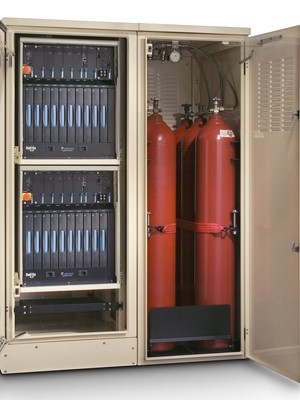
Hydrogen mobility
Hydrogen used as fuel can remove carbon dioxide from transportation if we use sustainable energy sources. In this case, the biggest benefit is zero CO2 emission and low environmental impact since its only byproduct is water.
Aerial transport
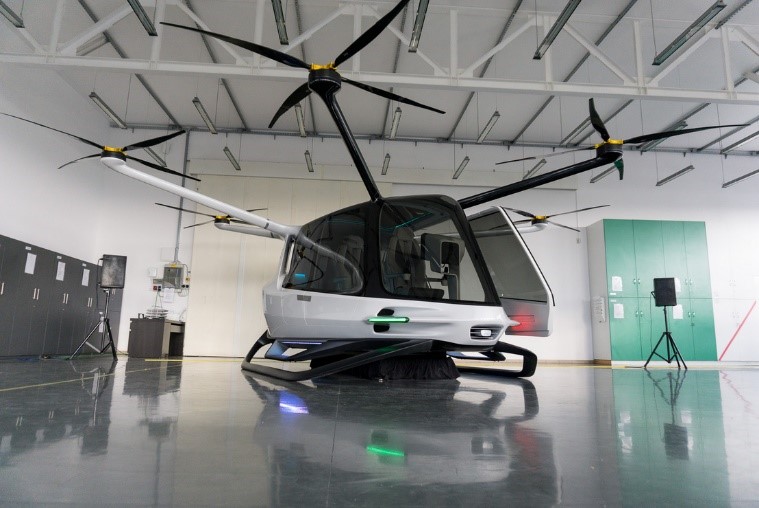
When it comes to aerial transportation, hydrogen is regarded as power source, since it has been used at space travel for a while. Fuel cell modules supply the planes’ electric systems by providing emergency generator or supplementary power supply. They make it possible for planes to start their gear and move on the runway.
There are small sized drones that fly using electricity powered by fuel cells. (https://www.hes.sg/hycopter) An American company cooperating with the Hungarian Genevation Aircraft to build a passenger drone that is powered by fuel cell. (https://www.youtube.com/watch?v=cPfBhZYKm2E)
In the future, zero emission will be the aim at aerial travel as well: for now, some bigger companies are testing hydrogen powered, altered gas turbines. (https://totalcar.hu/magazin/2020/01/29/uzemanyagcellas_szemelyszallito_dron_keszul_magyarorszagon/)
Water transportation
Hydrogen is also used as deck power source at water transportation, it is still in its early stages as drive in small passenger ships and ferries.
This is the area where Kontakt-Elektro Ltd is also actively participating: it introduced its first fuel cell powered ship (2.7kW) in Balatonlelle in 2013 on Balaton Show. Later in 2020 in Balatonkenese, a 15kW yacht that is supplied with hydrogen storage and can be filled from the coast. (H2-evolution jacht.pdf).
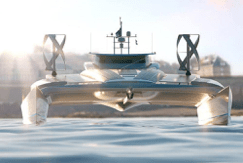
Railway transportation
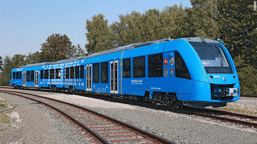
Since the world’s first fuel cell train, the Coradia iLint which was produced by Alstrom in 2018, the interest towards the technology being applied in railway has grown gradually. Since September 2020, Coradia iLint has been present in Austria, and they have also signed a contract with the Dutch railway company.
Besides Alstom, Siemens has also started developing its own fuel cell train, which is based on the company’s electric train, Mireo Plus.
Heavy duty vehicles, buses
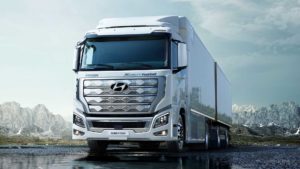
Air pollution is a serious health concern, and the transport sector takes a huge part in it. Zero emission in these vehicles has never been more important.
Comparing battery-electric trucks, fuel cell technology offers longer range, performance, load capacity, and fast recharging.
A manufactured fuel cell truck has the following attributes:
- Charging time: 8-20 minutes
- Range: ~400 km.
- 190 kW performance.
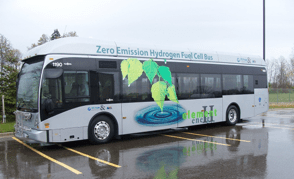
In urban public transport, many expect the conquest of fuel cell power. Many bigger cities saw demonstrations and projects for operating fuel cell powered buses on an experimental basis.
You can find more information about European projects on the following website: https://www.fuelcellbuses.eu/. Since the launch of the first project in 2010, the participating buses have collected over 11 million kilometers worth of performance.
Passenger cars
Hydrogen fuel cell can be an alternative solution to the only battery-powered, zero emission passenger cars.
Though hydrogen is a clear source of energy, with beneficial chemical attributes, it hasn’t yet become a popular source of energy in transportation. Based on the experiences of the past few years, the technology will be more and more in the center of passenger cars as well.
Nowadays, there are plenty of practical experiences available about fuel cell based cars. This is due to the fact that some bigger manufacturers started producing it since the middle of 2010, which provide the same quality as their traditional, internal combustion counterparts. The price of a middle-sized fuel cell car is still much lower, than the traditional internal combustion competitors, but with mass production this number will decrease even further.
Toyota Mirai or Hyundai Nexo (earlier ix35) models already possess exceptional fleet in Western European countries. Toyota is planning to launch its Mirai model in Hungary in 2021, which might encourage building more hydrogen refill stations which have been in store for quite some time.

